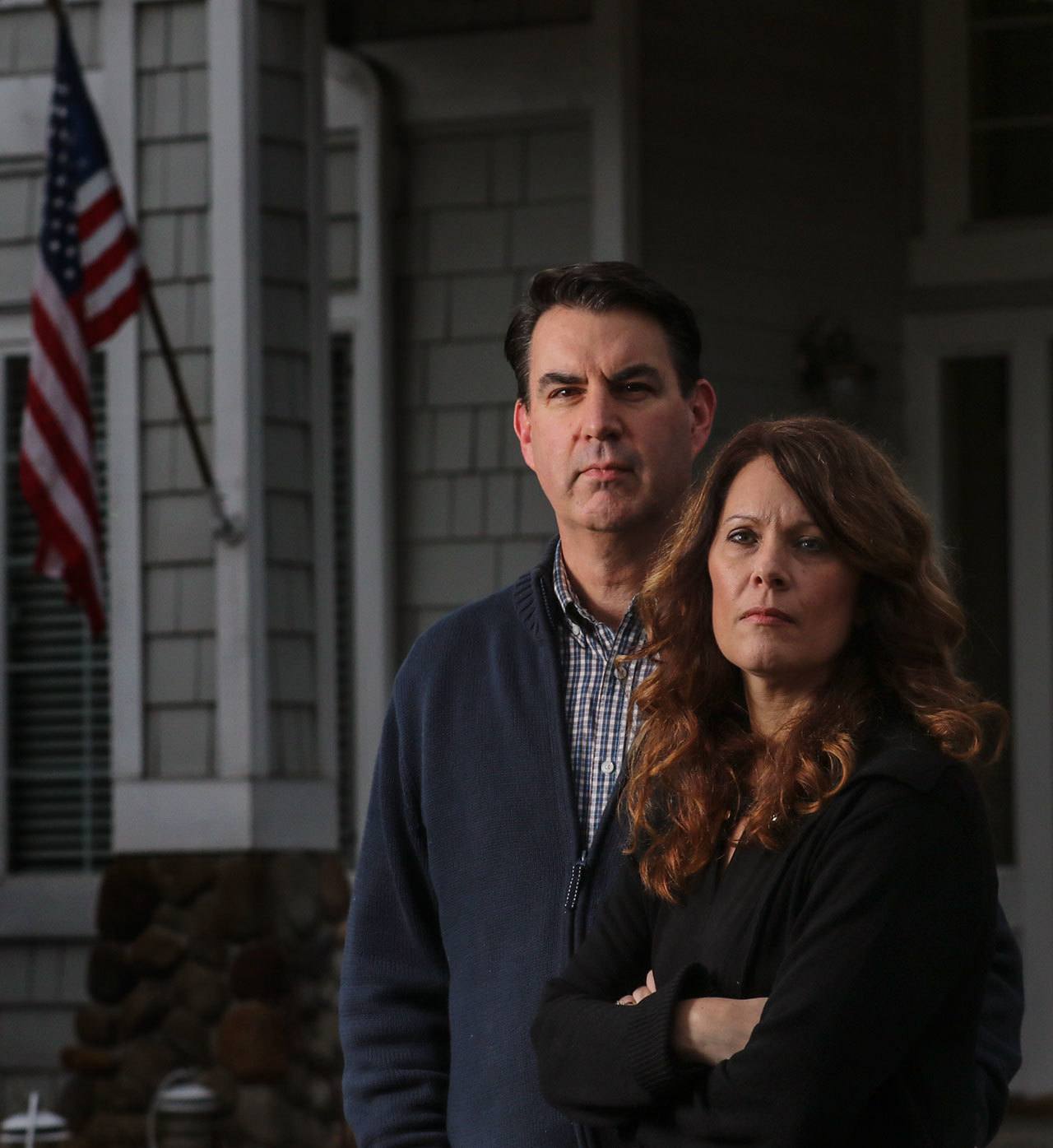SNOHOMISH — Cheryl Carlson was surprised last month to receive a letter informing her that she’d soon have to start paying property taxes to support Sound Transit.
The Everett High School teacher and her husband, Darren, had never had to pay car-tab fees for the regional transit agency during the nearly 10 years they’ve lived in the Gold Creek neighborhood near Willis Tucker Park. When the multibillion-dollar bus and light-rail expansion package known as Sound Transit 3 came up for a vote last fall, it didn’t appear on their ballots. The agency serves urban areas in three counties, from Everett south to DuPont in Pierce County.
As it turns out, Sound Transit’s taxing boundary runs through the Carlsons’ yard, taking in a sliver of driveway, house and back yard. They received a letter from the county assessor last month informing them as much. That meant they would have to pay Sound Transit property taxes on the roughly one-third of their property west of the line.
“I would have assumed that the people who would be affected by it would be voting on it,” she said. “Even for that small portion of my property, it’s pretty substantial.”
About 50 properties are in the same position across Snohomish County: part inside and part outside the Sound Transit district, which appears on statements as the Regional Transit Authority or RTA. It’s unclear if there’s any remedy for a situation many consider unfair.
“Why they split us up, rather than change the boundary a little bit to follow the property line, doesn’t make any sense,” said retiree Bill Steenis, who lives across the street from the Carlsons and whose yard also is divided.
Steenis said that over the years, he has discussed the issue with staff at the state Department of Licensing, who had agreed that it wouldn’t be right to make him pay the car-tab fee.
“They looked at the map and said, ‘Gee, 95 percent of your property is not in the RTA,’ ” he said.
The issue has never come up in Sound Transit’s 20-year history because, until now, it hadn’t levied a property tax. That changed with the passage of ST3, which asked voters for permission to raise sales tax, property taxes and vehicle registration fees to support some $53.8 billion in projects. Future benefits include building out light rail to Everett by 2036 and a new rapid-transit bus route to Lynnwood via I-405 by 2024. Other projects promise to connect the Link light-rail system to Tacoma as well as new neighborhoods in Seattle and the Eastside.
The measure was approved by 54 percent districtwide on the strength of overwhelming voter support in King County and narrow passage in Snohomish County. It failed in Pierce County.
Sound Transit’s district generally follows city limits or urban-growth boundaries in unincorporated areas. Many neighborhoods, like Gold Creek in unincorporated Snohomish County, were built after those lines were drawn in 1996.
ST3 triggered a half-cent rise in sales tax that’s set to take effect April 1. A 0.8 percent hike in car-tab fees will apply to renewals after March 1, costing the owner of a $10,000 car an extra $80 per year.
The measure also levied a property tax of 25 cents per $1,000 of assessed value. That would total $75 on a $300,000 home.
After the measure passed, it was left to local officials to determine who would pay property taxes. Assessor Linda Hjelle says she sought guidance from county attorneys and the state Department of Revenue.
“For us, based on the legal description that Sound Transit provided for the taxing district area, that’s how we determined what was in and what was out,” Hjelle said.
The legal description didn’t necessarily follow property lines.
“For those properties where the boundary went through part of the property, we had to set up two accounts,” she said. “We waited until the levy passed before we did that.”
Their notice to affected property owners went out Dec. 8. The changes will kick in for taxes due later this year.
The county Auditor’s Office follows a separate process for determining who can vote where.
“In our determination, one person can only have one vote,” elections manager Garth Fell said.
The issue comes up frequently with addresses split between two fire districts or school districts.
“You can’t vote in two fire districts,” Fell said.
To figure out who’s in which district, staff looks at aerial photos, he said. For split properties, they typically go by the house location.
“If there’s a building there, usually we will place it wherever the building is,” Fell said. “There is no clear rule in state law. It doesn’t say that if the majority of the property is in, then it’s in that particular district. That tends to be how it works out, but it’s not always the case.”
Officials with Sound Transit, the state Department of Revenue and Secretary of State’s Office said it’s up to the county to oversee the details about voting districts and taxation.
For now, there’s head-scratching for people such as Carlson, Steenis and others on the outskirts of Everett, Snohomish, Mill Creek and Bothell who find themselves straddling the Sound Transit’s boundary.
Noah Haglund: 425-339-3465; nhaglund@heraldnet.com. Twitter: @NWhaglund.
Talk to us
> Give us your news tips.
> Send us a letter to the editor.
> More Herald contact information.

























